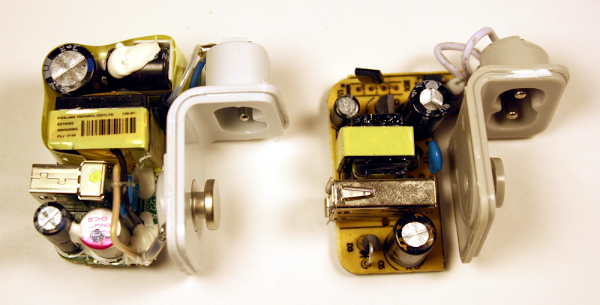
Teardown reveals the risks of counterfeit iPad chargers

A teardown by an engineer investigating the differences between genuine and counterfeit iPad chargers found that despite looking almost identical externally, there were big differences internally, impacting on both power delivery and safety.
One safety difference is obvious: the Apple charger has much more insulation. The upper (high-voltage) half is wrapped in yellow insulating tape. Some components are encased in shrink tubing, there are plastic insulators between some components, and some wires have extra insulation. The counterfeit charger only has minimal insulation.
While the genuine charger delivered slightly above the 10W claimed, the counterfeit delivered only 5.9W, meaning it would take almost twice as long to charge. The fake charger power delivery was also found by engineer Ken Shirriff to be “noisy and low quality.”
But it’s the safety side that provides the greatest argument for sticking to the real deal. For example, safety regulations require a gap of at least 4mm between high- and low-voltage sides of any transformer. The genuine Apple charger comfortably exceeds this with a 5.6mm gap, while the fake charger gap was just 0.6mm.
The Apple charger also uses triple-insulated wire, while the fake one is uninsulated but for a thin varnish coating.
The full teardown is worth a read if you want chapter and verse, but the tl;dr version is that cheap chargers are cheap for a reason.
